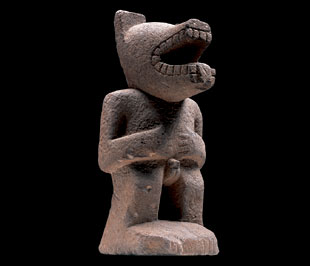|
























|
|









The Tarascan Empire
The Tarascan, or Purepecha, people established their military and political dominion in West Mexico. They reached Lake Patzcuaro, in Michoacan, settling in ancient villages. In time, they conquered an extensive territory that included mainly the present-day state of Michoacan and bordering areas; their boundaries stretched from the Lerma River to the Balsas River flowing into the Pacific.
According to the Relación de Michoacán, a pictographic document from the 16th century, the consolidation of the Tarascan empire occurred in the year 1370. It was personified by Tariacuri, a cultural hero who achieved unification of the small villages around Lake Patzcuaro. He also incorporated the cities of Ihuatzio, Patzcuaro, and Tzintzuntzan into the empire. Tzintzuntzan became the center of the the Tarascans' political, economic, and religious power, and was the capital later known by the Spanish conquistadores.
Like the Aztecs, the Tarascans were distinguished by their capacity for war, and they established a line of fortifications to mark their borders. They were the only indigenous people able to prevent the Aztec empire from expanding into their territory. This enabled the Tarascans to develop a unique culture and art, which distinguished them from the rest of Mesoamerica.
Coyote. Tarascan, ca. 1250–1521. Stone, 52 x 22 x 18 cm. Museo Nacional de Antropología, INAH, Mexico City. Photo Michel Zabé, assistant Enrique Macías.
|
|